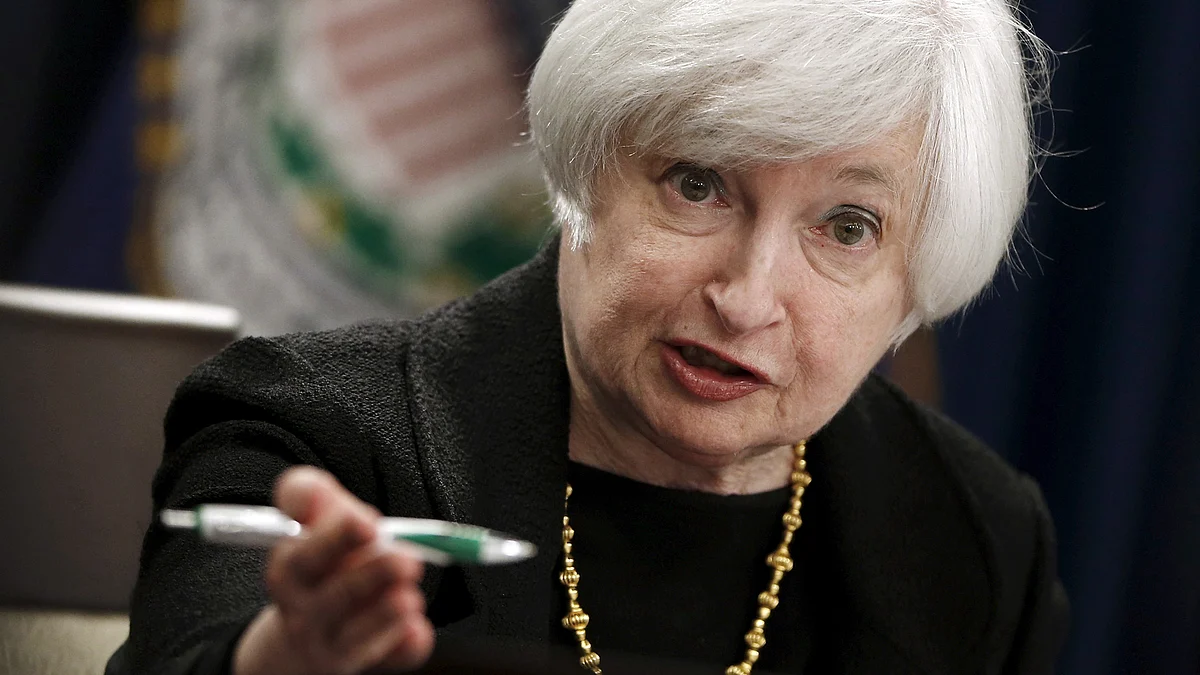As Rate Hike Nears, Fed’s Hints on Future Action to Be Scrutinised
Will the Fed step off the gas and raise policy rates for the first time since 2008?

advertisement
Fed’s Commentary Will Be Key
- Fed is almost sure to raise rates on Wednesday but the timing and pace of future hikes is uncertain.
- An aggressive pace may lead to spike in borrowing costs, hurt the economy and roil financial markets.
- Sub-2 percent inflation could keep the pace of rate hikes gradual.
- Some analysts say the Fed will raise rates by a quarter-point once per quarter during 2016, following the December hike.
- Others suggest that while Fed officials want to move slowly, rising inflation could force them to accelerate the pace.
It’s not about what it will do. It’s about what it will say.
The worst-kept secret in the financial world is that the Federal Reserve is all but sure to raise interest rates from record lows by a modest quarter point on Wednesday.
On that, pretty much everyone agrees. The uncertainty hinges on what the Fed will say about how much and how fast it expects to raise rates again in coming months. A relatively aggressive pace would contribute to higher borrowing rates and risks slowing the economy. It could also roil financial markets.
It isn’t the message investors want to hear. They’d prefer for the Fed to signal that it foresees a slow and gradual series of rate hikes, one that would allow it to periodically assess whether the economy was sturdy enough to withstand higher rates.
The Fed has kept its benchmark short-term rate near zero since setting it there in 2008 to help save the financial system in the depths of the financial crisis. Now, with the job market all but fully healthy, the central bank is ready to begin lifting rates toward normal levels.
Its policymakers have signalled in recent months that they foresee an incremental pace. But investors want further assurance.
One factor that could keep the pace of hikes gradual is the absence of inflation pressures. In fact, inflation remains stubbornly below the Fed’s 2 percent target level. This has resulted from global economic weakness, falling energy prices and a strong dollar, which makes imports cheaper in the United States.
Investors will scrutinise the Fed’s statement and Chair Janet Yellen’s news conference afterward for clues to what might cause an acceleration of rate increases over the next year.
Still, most economists think the statement the Fed will issue when its latest policy meeting ends and Yellen’s remarks afterward will signal that while the Fed is ending an era of near-zero rates, it isn’t planning a very fast liftoff.
First Hike in 9 Years?
- The first rate hike this year was expected to come in September.
- After China shocked financial markets by devaluing its currency, that hike was put on hold.
- The health of the US economy and the labour market also prompted the Fed’s wait-and-watch mode.
- The central bank’s target for its federal funds rate has hovered between zero and 0.25 percent since December 2008.
Earlier this year, speculation had centered on the likelihood of a first hike occurring in September. But last summer, financial markets tumbled after China shocked investors by devaluing its currency, fanning fears that the world’s second-largest economy was slowing more than anyone thought. The Fed chose to delay a hike. Still, Yellen continued to say that a rate increase was likely before year’s end.
The central bank’s target for its federal funds rate —the interest that banks charge each other — has hovered between zero and 0.25 percent since December 2008. On Wednesday, it’s expected to modestly raise that range to between 0.25 percent and 0.5 percent.
Some analysts say they think the Fed will then raise rates by a quarter-point once per quarter during 2016, totalling a 1 percentage point increase for the year. Diane Swonk, chief economist at Mesirow Financial, foresees only three quarter-point moves in 2016. And she thinks the Fed might decide to wait until June before raising rates a second time.
Other analysts suggest that while Fed officials want to move slowly, rising inflation could force them to accelerate the pace.
He expects the Fed’s benchmark rate to end 2016 near 2 percent, twice the level Swonk foresees.
(At The Quint, we question everything. Play an active role in shaping our journalism by becoming a member today.)